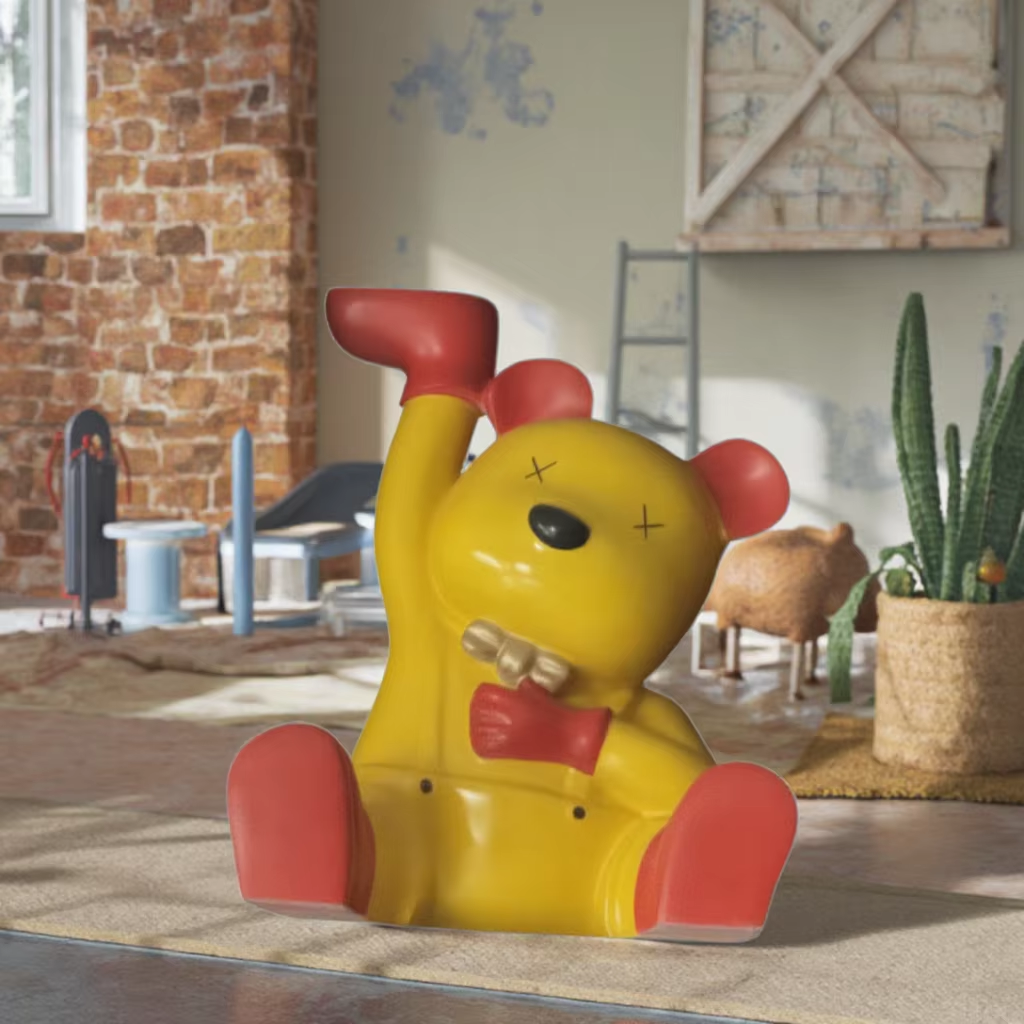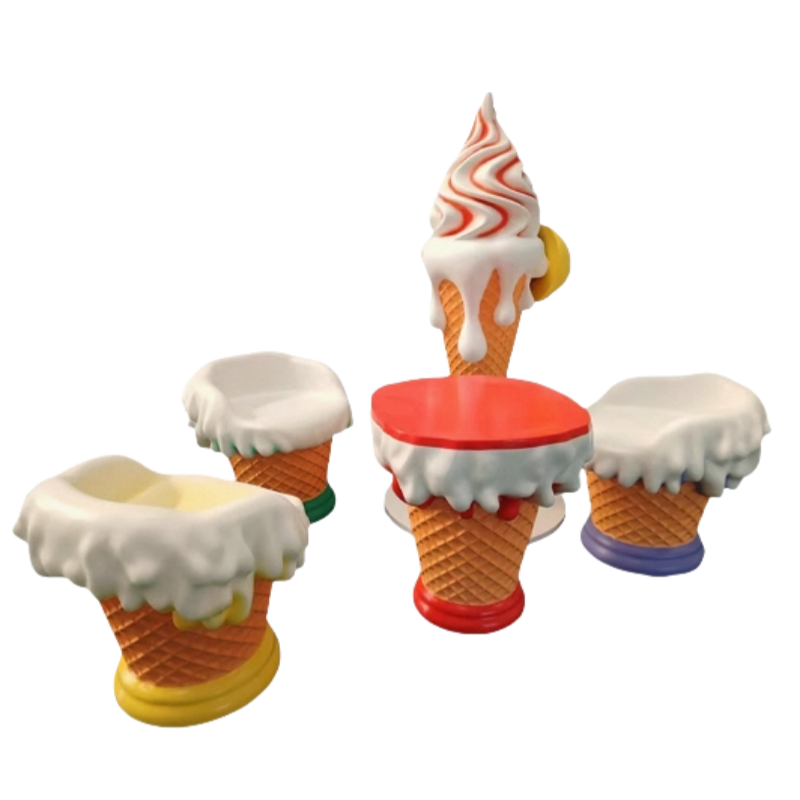Garden sculpture decorations have emerged as transformative elements that can dramatically enhance the aesthetic appeal and character of outdoor spaces. These artistic installations serve as focal points that bridge the gap between nature and human creativity, offering property owners an opportunity to express their personal style while creating captivating visual experiences. Modern homeowners and landscape designers increasingly recognize the profound impact that well-placed sculptural elements can have on the overall ambiance of gardens, patios, courtyards, and other outdoor environments.
The integration of sculptural art into landscape design represents a sophisticated approach to outdoor space planning that goes beyond traditional gardening concepts. These decorative elements create layers of visual interest that evolve throughout different seasons and lighting conditions. Whether crafted from stainless steel, bronze, stone, or contemporary composite materials, garden sculptures provide enduring beauty that complements both formal and informal landscape styles. The strategic placement of these artistic features can transform ordinary outdoor areas into extraordinary spaces that reflect sophistication and thoughtful design consideration.
Material Excellence in Contemporary Garden Sculptures
Stainless Steel Advantages for Outdoor Art
Stainless steel has become the preferred material for premium garden sculpture decorations due to its exceptional durability and resistance to environmental elements. This sophisticated metal offers superior corrosion resistance, ensuring that sculptural investments maintain their pristine appearance throughout years of exposure to varying weather conditions. The reflective properties of polished stainless steel create dynamic visual effects that change throughout the day, capturing and redirecting sunlight to illuminate surrounding landscape features in captivating ways.
The versatility of stainless steel allows artists and manufacturers to create intricate geometric forms, fluid organic shapes, and complex architectural structures that would be challenging to achieve with traditional materials. Mirror-finish stainless steel sculptures serve dual purposes as both artistic statements and functional elements that can visually expand smaller outdoor spaces by reflecting surrounding vegetation and sky. This material's low maintenance requirements make it particularly appealing for busy homeowners who desire sophisticated outdoor art without extensive upkeep commitments.
Alternative Materials for Diverse Design Preferences
While stainless steel dominates the contemporary market, alternative materials continue to offer unique aesthetic possibilities for garden sculpture decorations. Natural stone sculptures provide timeless appeal that harmonizes beautifully with organic landscape elements, creating connections between artistic expression and natural beauty. Bronze sculptures develop distinctive patinas over time, adding character and depth that many collectors find particularly appealing for establishing mature, sophisticated outdoor environments.
Composite materials and treated metals offer additional options for property owners seeking specific aesthetic effects or budget considerations. These materials can be engineered to mimic natural textures while providing enhanced weather resistance and reduced weight for easier installation. The choice of material significantly influences the sculpture's integration with existing landscape features and architectural elements, making material selection a crucial consideration in the design process.
Design Principles for Optimal Sculpture Placement
Scale and Proportion Considerations
Successful integration of garden sculpture decorations requires careful attention to scale relationships between artistic elements and surrounding landscape features. Large-scale sculptures can serve as dominant focal points in expansive gardens, while smaller pieces work effectively as subtle accents that draw attention to specific areas or create intimate gathering spaces. The proportional relationship between sculpture size and available space determines whether the artistic element will enhance or overwhelm the existing environment.
Professional landscape designers recommend considering viewing distances when selecting sculpture dimensions, ensuring that pieces remain visually engaging from primary observation points while maintaining appropriate scale relationships with nearby plantings and architectural features. Vertical sculptures can add height interest to predominantly horizontal landscapes, while horizontal pieces can provide grounding elements that stabilize dynamic planting compositions. Understanding these proportional relationships enables property owners to make informed decisions that maximize the aesthetic impact of their sculptural investments.
Strategic Positioning for Maximum Visual Impact
The placement of garden sculpture decorations significantly influences their effectiveness as design elements within outdoor spaces. Corner placements can activate underutilized areas while providing natural boundaries between different functional zones. Central positioning creates strong focal points that organize surrounding landscape elements and establish clear sight lines that guide movement through the space.
Consider lighting conditions throughout different times of day when determining optimal sculpture locations, as shadows and reflected light contribute significantly to the overall visual experience. Morning and evening light angles can create dramatic shadow patterns that extend the sculpture's visual presence beyond its physical boundaries. Strategic positioning near water features, architectural elements, or specimen plantings can create compelling compositional relationships that enhance the impact of all involved elements.

Seasonal Adaptation and Year-Round Appeal
Winter Interest and Structural Beauty
Garden sculpture decorations provide essential visual interest during winter months when many landscape elements become dormant or less prominent. Quality sculptural pieces maintain their aesthetic impact regardless of seasonal changes, offering consistent focal points that prevent outdoor spaces from appearing barren during colder periods. Metallic sculptures can create striking contrasts against snow-covered landscapes, while their geometric forms provide structured beauty that complements the stark elegance of winter garden compositions.
The reflective properties of mirror-finish stainless steel sculptures become particularly valuable during shorter winter days, capturing and amplifying available natural light to brighten outdoor environments. These pieces can serve as beacons that draw attention to garden areas that might otherwise be overlooked during dormant seasons. Winter positioning considerations should account for snow load capacity and potential ice formation that could affect both the sculpture's stability and surrounding safety conditions.
Spring and Summer Integration with Growing Landscapes
As landscapes transition into growing seasons, garden sculpture decorations interact dynamically with emerging vegetation and changing environmental conditions. Spring bulb plantings can be designed to complement sculptural bases, creating seasonal color displays that enhance the artistic impact of permanent installations. Summer growth patterns should be anticipated to ensure that sculptures remain visible and accessible as plantings reach their mature dimensions.
The interplay between sculptural elements and seasonal blooms creates opportunities for carefully orchestrated color relationships and textural contrasts that evolve throughout the growing season. Deciduous plantings can be strategically positioned to provide varying levels of sculpture visibility, creating surprise elements that reveal different aspects of the artwork as foliage changes. This dynamic relationship between permanent art and seasonal plant materials adds layers of interest that keep outdoor spaces engaging throughout multiple viewing experiences.
Maintenance and Longevity Considerations
Protecting Investment Value Through Proper Care
Maintaining the appearance and structural integrity of garden sculpture decorations requires understanding material-specific care requirements and implementing appropriate maintenance routines. Stainless steel sculptures benefit from periodic cleaning with appropriate non-abrasive cleaning solutions that preserve surface finishes while removing accumulated environmental deposits. Regular inspection of mounting systems and structural connections ensures continued safety and stability, particularly for larger installations that may experience significant wind loads.
Professional maintenance services can provide specialized care for valuable sculptural investments, including protective coatings, structural assessments, and restoration services when necessary. Documenting maintenance activities and any changes in the sculpture's condition helps preserve warranty coverage and provides valuable information for future care decisions. Proper maintenance practices significantly extend the lifespan of garden sculptures while preserving their aesthetic appeal and investment value.
Environmental Factors and Protection Strategies
Understanding local environmental conditions helps determine appropriate protection strategies for garden sculpture decorations exposed to varying weather patterns and seasonal extremes. Coastal installations may require additional protective measures to address salt spray exposure, while areas with severe winter conditions might benefit from seasonal protection or repositioning strategies. UV exposure considerations become particularly important for sculptures with painted finishes or composite materials that may be susceptible to fading or degradation over time.
Drainage considerations around sculpture bases prevent water accumulation that could lead to foundation problems or accelerated material degradation. Proper site preparation including appropriate drainage systems and stable foundations contributes significantly to long-term sculpture performance and appearance. Understanding these environmental factors during the planning phase enables property owners to make informed decisions about sculpture selection, positioning, and protection strategies that maximize longevity and aesthetic impact.
FAQ
What size sculpture works best for small garden spaces
Small garden spaces benefit most from sculptures that are proportionally scaled to avoid overwhelming the available area. Generally, pieces ranging from 18 to 36 inches in height work well in compact gardens, providing visual interest without dominating the space. Consider the primary viewing distance and ensure the sculpture complements rather than competes with existing plantings and architectural features.
How do weather conditions affect different sculpture materials
Stainless steel offers superior weather resistance with minimal maintenance requirements, while materials like bronze develop natural patinas that many find aesthetically appealing. Stone sculptures may require periodic sealing in freeze-thaw climates, and composite materials should be evaluated for UV resistance in areas with intense sunlight exposure. Choose materials based on local climate conditions and desired maintenance levels.
Can garden sculptures be relocated seasonally
Many garden sculpture decorations can be relocated seasonally, depending on their size, weight, and mounting systems. Smaller pieces offer flexibility for seasonal repositioning, while larger installations typically require permanent placement. Consider installation methods during selection to maintain relocation options if desired for seasonal display changes or landscape modifications.
What budget considerations should guide sculpture selection
Budget planning should include initial purchase costs, installation requirements, and long-term maintenance expenses. Higher-quality materials like stainless steel may require larger initial investments but offer superior longevity and lower maintenance costs over time. Factor in professional installation costs for larger pieces and consider the sculpture as a long-term landscape investment that can enhance property value.


